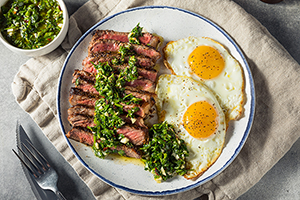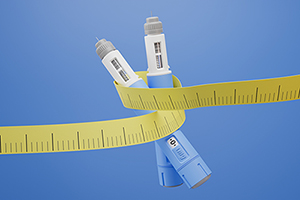



| By Dr. Ronald Hoffman
Over the years I’ve competed in at least 15 triathlons. I was a late-bloomer, starting 25 years ago at the age of 38. Triathlons consist of consecutive swim/bike/run segments, ranging from short sprints to medium Olympic distance, to truly grueling Ironman and half-Ironman competitions. I’ve only done Olympic races. You can learn all about Olympic triathlons here.
 A couple of Sundays ago I completed the Riverhead Rocks triathlon, in Riverhead, NY. The swim segment was 9/10ths of a mile; the bike 25 miles, and the run 6.2 miles (10K). Traditionally, it takes me about 3-3½ hours of continuous exercise to complete. Not championship performance, but slow and steady wins the race, and as I get older, the competition winnows. Only 7 athletes completed the race in my age group, 59-64, out of a field of 200.
A couple of Sundays ago I completed the Riverhead Rocks triathlon, in Riverhead, NY. The swim segment was 9/10ths of a mile; the bike 25 miles, and the run 6.2 miles (10K). Traditionally, it takes me about 3-3½ hours of continuous exercise to complete. Not championship performance, but slow and steady wins the race, and as I get older, the competition winnows. Only 7 athletes completed the race in my age group, 59-64, out of a field of 200.
Why do I do it? The triathlon provides me with a year-long training focus. As a medical nutritionist with an anti-aging focus, I like to turn my body into a living laboratory to explore the effects of diet, supplements, and exercise on expanding the limits of performance. Since I counsel a lot of optimizing Gen X-ers and Boomers, gearing up for a triathlon helps me personally experience what works best for promoting energy, stamina, and injury prevention and recovery.
In addition, I value my brain (shouldn’t everyone?). A study in theJournal of Alzheimer’s Disease, highlighted recently by Dr. David Perlmutter, reinforces that regular, intense exercise is the single most reliable way of staving off brain aging: Subjects “who expended more calories (more aerobic exercise) actually demonstrated an increasein the size of various brain areas, meaning that stem cell therapy was turned on and was actually growing new brain cells!”
2016 was a particular challenge for me because I hadn’t done a triathlon in 4 years. I did well at age 59, winning my age group in the 2012 Riverhead triathlon and completing a second one a few weeks later. But it was as if my warranty ran out when I hit 60: I developed a nagging plantar fasciitis, probably from an overzealous running schedule. I also experienced back and hip soreness, which sapped my energy. For a while, even a trip to the museum seemed a chore. I went so far as to check myself for arthritis (my mother suffered from crippling rheumatoid arthritis at my age) and Lyme Disease, but all the tests came up negative. I began to think that I would have to hang up my bike kit and running shoes, and rest on my laurels. For a while, I seriously doubted whether I’d ever return to the triathlon circuit.
I addressed the plantar fasciitis with prolonged abstinence from running, orthotics, six months of wearing a night-time foot splint, a concerted program of calf and hamstring stretching, anti-inflammatory supplements and daily MELT practice. But while the heel pain subsided, I still felt constrained by my body pain. I recall times a couple of summers ago when, after a few minutes of preparing dinner on the grill, I’d have to apologize to company and excuse myself to lie down. Increasingly, I was reaching for the Tylenol bottle.
After reaching rock bottom, I decided to consult a sports chiropractor, himself a long distance runner. I committed to twice weekly adjustments, and slowly, my pain abated. At first, I was afraid to resume running, but with encouragement from my chiropractor, I began to train: first, a mere mile at a slow lope, then gradually ramping up to two, then an occasional four. My chiropractor insisted that, for my rehab to be complete, I needed to not coddle myself, but instead engage in a program of dynamic recovery, reconditioning my fallow leg muscles. I also worked with my personal trainer to stretch and strengthen my core, with an emphasis on hip and ab exercises. Pool sessions maintained my aerobic fitness while my lower extremities got a temporary respite from pounding.
By late 2015, I was on the mend, but by no means confident that I’d have enough in the tank by summer to contemplate a triathlon attempt.
Two things changed that. First, on Christmas eve, I embarked on the Whole30 Diet program, a variant of the Paleo Diet. I had been adhering to what most people would consider an exceptionally good diet, but with the Whole30 I gave up all sugar, gluten-free bread substitutes, grains, dairy, legumes, and alcohol.
I had initially intended to just complete the 30-day challenge, but as the old song goes, I got “hooked on a feeling.” With rare exceptions, I’ve adhered to the diet now for over eight months, with spectacular results in terms of my energy and focus, and I haven’t looked back. My body pain abated, and I began to absorb increasing training loads without prolonged recovery periods when my sore muscles would sideline me. I haven’t even thought of taking Tylenol in 2016.
Additionally, while I still ate a ton of food to meet the caloric demands of my training, and in spite of the fact that I wasn’t trying to lose weight, the pounds melted off. I went from 172 pounds to 158, requiring me to take in several pairs of pants. This is an enormous advantage in running and cycling where a few less pounds dramatically lighten your race workload.
And second, I was introduced to nicotinamide riboside by Jack Duffy of Thorne Research. Initially skeptical, I had tried Niacel at a dose of 125 milligrams twice daily and didn’t notice much difference in how I felt. Jack encouraged me, based on more recent research, to retry it for two weeks at the newly-introduced higher dose of 250 milligrams twice daily. Somehow, it clicked: I really did notice improved energy and my race prep went through the roof!
This makes sense, in light of a recent trial. In results of a mouse study published this year in the journal Cell Metabolism, researchers at the University of Pennsylvania’s Perelman School of Medicine, together with collaborators at Princeton University and Queens University, Belfast, describe how nicotinamide riboside helps to reactivate a protective metabolic process in muscle that tends to be lost as aging occurs.
The researchers stated “We know that the amount of NAD+ in muscles declines as we age,” and that it may be possible to restore muscle function lost due to aging by replenishing NAD+ levels with nicotinamide riboside. While cautioning that it may be premature to consider nicotinamide riboside as a performance enhancing nutrient before further research is completed in humans, the study authors conclude that “nicotinamide riboside showed that it was more effective in restoring muscle function in this study than a more common form of vitamin B3, nicotinamide.”
 As I customarily do before an impending triathlon, I compulsively watched the long-range weather reports for the morning of the event. It kept changing from thundershowers, to chance of rain, to partially cloudy and then, ominously, to a tri-state heat alert. OK, no rain-out, but would this triathlon take place on the hottest, most humid day of the year so far? This added to my apprehension, but I went to bed early and got a good night’s sleep only to awake at 4:30 AM to temperatures already pushing 80.
As I customarily do before an impending triathlon, I compulsively watched the long-range weather reports for the morning of the event. It kept changing from thundershowers, to chance of rain, to partially cloudy and then, ominously, to a tri-state heat alert. OK, no rain-out, but would this triathlon take place on the hottest, most humid day of the year so far? This added to my apprehension, but I went to bed early and got a good night’s sleep only to awake at 4:30 AM to temperatures already pushing 80.
I breezed through the swim and bike segments, but by the time I hit the run course the sun was beating down mercilessly and the temperature was surpassing 90 degrees! I gamely ran the first 3 miles, but soon noticed that even many stalwart competitors were taking a breather and sensibly walking parts of the course. I finally relented and walked for a few minutes, obeying the first rule of triathlon—“Don’t die!”(A week earlier at the Smith Point triathlon a 69 year old contestant tragically succumbed during the swim portion.) At the final hydration station, a generous volunteer handed me a huge chunk of ice, with which I proceeded to swab my body as I got my second wind and finished the race.
Mission accomplished! There’s always next year, and the good news is that I’ll race in the 65-69 age group, which, this year, consisted of only one determined contestant—who naturally clinched first in his division just by finishing!
Though we think of declining estrogen as the hallmark of menopause, it's actually common for…

Up to 12 percent of Americans have ulcers at some point in life. Peptic ulcers…
Gallbladder disease is a modern illness. An estimated 20 million Americans have gallbladder disease. The…

Dr. Antonio Bianco, recipient of the American Thyroid Association’s John B. Stanbury Thyroid Pathophysiology Medal,…

There’s a misconception among low-carb dieters. Many people believe a low-carb diet is much higher…

New, more powerful weight loss drugs: Drugs like Wegovy, Rybelsus, Ozempic and Mounjaro/Zepbound are revolutionizing…

Q&A with Leyla, Part 1: ‘Good’ Bacteria

Our virtual voicemail is open 24/7, so there's no need to wait to submit your questions for Dr. Hoffman. Leave a message, and you may hear your question featured on the Intelligent Medicine radio program!